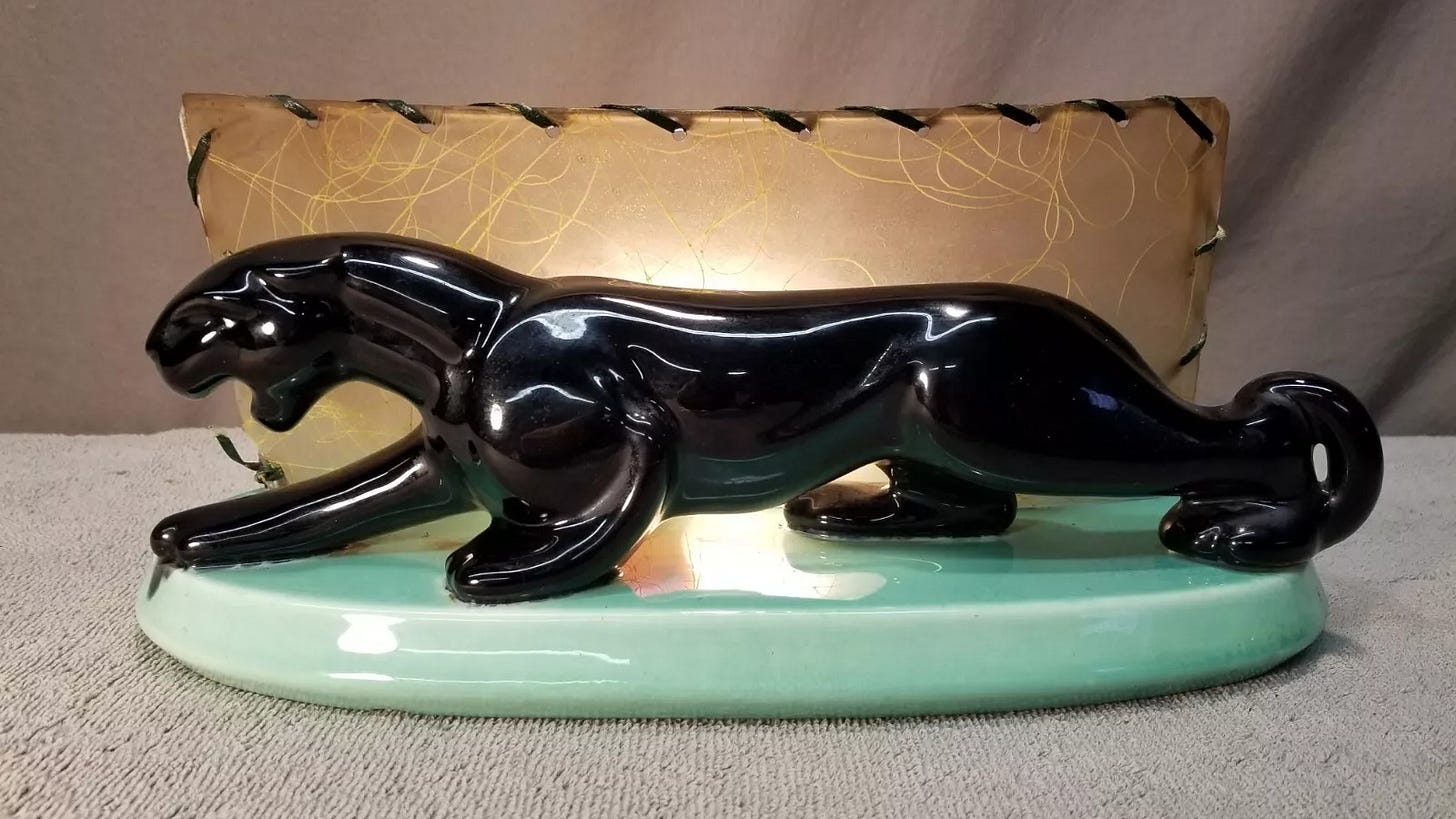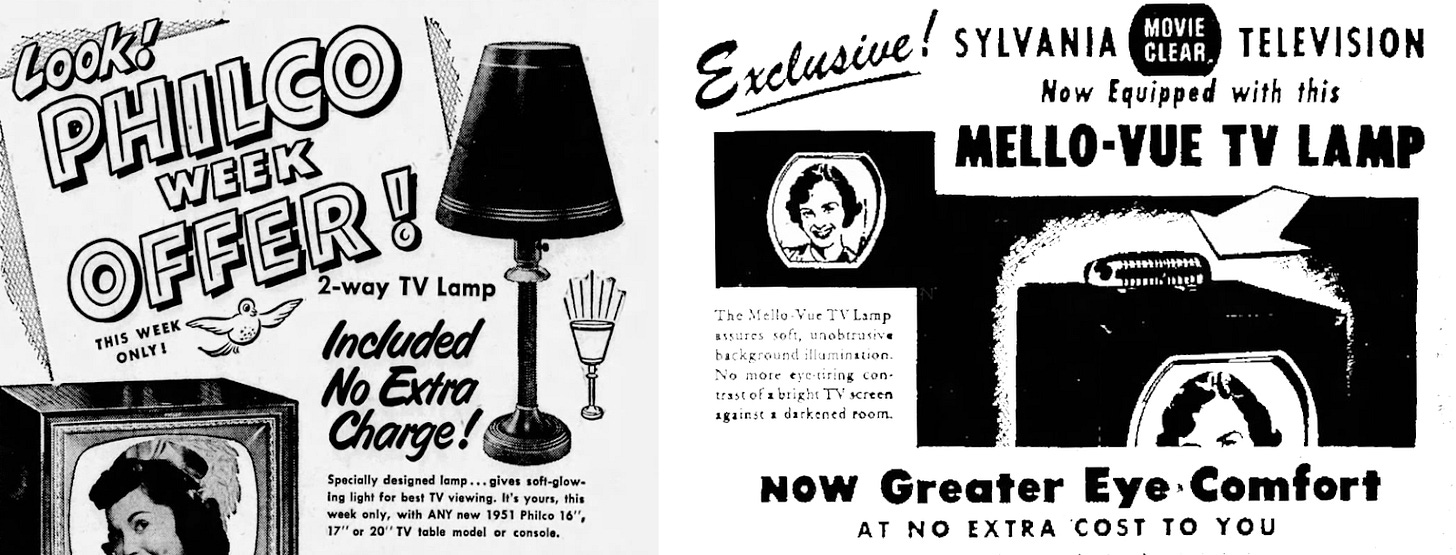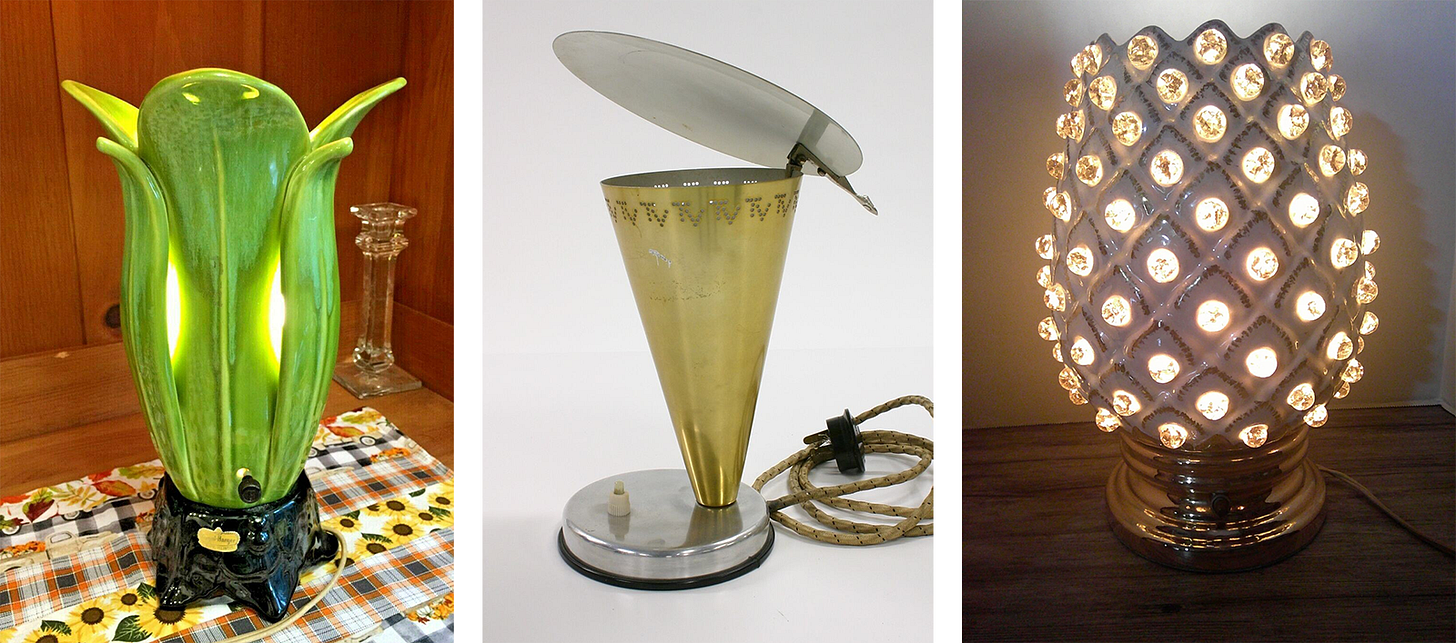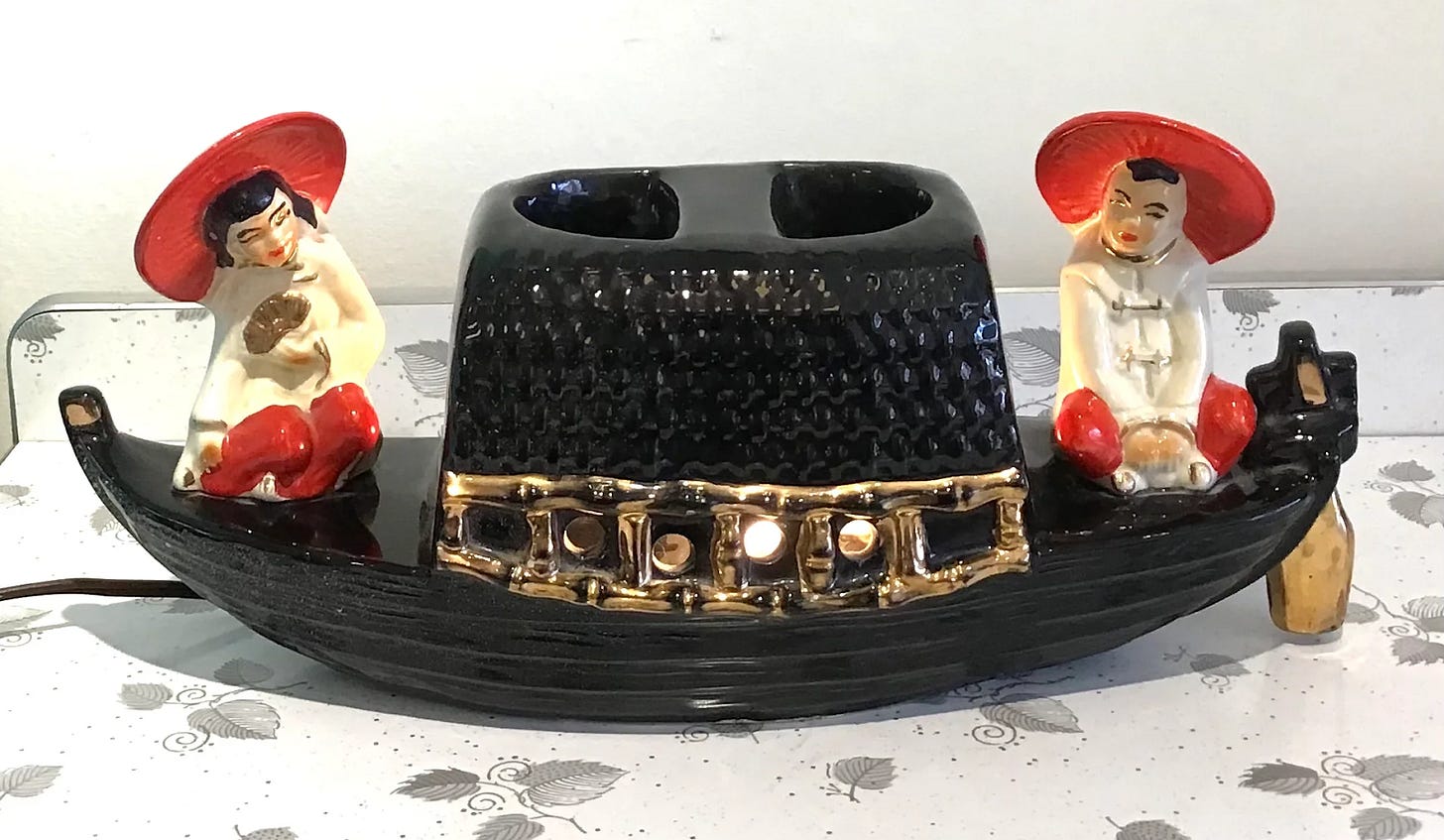TV lamps: Shoddy Goods 062
The rise and fall of a midcentury essential
I’m Jason Toon and I'm not a valuable consumer—because I buy so much stuff at thrift stores, yard sales, and secondhand online. This issue of Shoddy Goods, the newsletter from Meh about consumer culture, looks at an item that used to be easy to find in those venues, but which has gotten a lot more rare.
The coming of television didn't just transform where people put their living-room furniture. It was a big change for the human eye, too. For the first time ever, ordinary people could stare at a glowing screen for hours in the comfort of their own home. The early televisions were small and not especially clear, so early viewers tended to sit close and stare hard. And since the tubes weren't especially bright, it helped to watch in the dark.
It didn't take long for some of those bleary proto-bingers to start feeling some eye-sizzle after another marathon throwdown with Uncle Miltie and the Ricardos. Uh-oh, was watching TV in the dark bad for your eyes? The machine of industry did what it does best: head off concerns about one product by coming up with another product. Thus began the brief shining moment of the TV lamp.
Only marginally less interested in you than a real cat
"Approved by leading doctors"
There wasn't really any evidence for that fear. In 1949, the British Association of Optical Practitioners advised for comfort's sake not to sit too close to the TV, or at too extreme an angle. But otherwise, they said, "Television itself is not harmful to the eyes." A paper that same year in The Sight-Saving Review by Dr. Benjamin Rones likewise found "It is not that the eyes are damaged by television, but rather that television is demanding more accurate use of the eyes, and therefore the correction of small errors to promote their comfort."
Commercially, the truth behind the fear mattered less than the fact that people believed it. The lightbulb moment (sorry, but not that sorry) came in 1950. What America needed was a lamp that was bright enough to reduce contrast in the room, but dim enough to keep the picture visible, and that cast its light indirectly so there was no glare on the screen. Suddenly TV lamps were everywhere.
Now with You-Won't-Go-Blind-O-Vision!
"Clearer pictures! No eyestrain!" blares a 1950 ad for the Maxilume lamp company. "This scientific development approved by leading doctors gives enough light to prevent eye strain but NOT so much that it interferes with vision." TV manufacturers themselves moved to inoculate their products from the issue, with Sylvania adding a "Mello-Vue TV Lamp" to its models, and Philco dealers giving away a stand-alone lamp with every purchase.
Knick-knacks by day, lamps by night
A thousand TV lamps bloomed. Some were recognizable as lamps, some were swooping Space Age rocketships, there was at least one that you bolted to the back of your TV. "TV lamps are almost unique in the insane diversity of their solutions to such a simple functional need," write Leland and Crystal Patton in their book Turned On: Decorative Lamps of the Fifties. But the ones that are best remembered are the weirdest ones of all.
Real tough guy, fighting a deer
The general '50s fad for ceramic sculptural lamps was a perfect fit for the TV lamp. Their smaller size meant the fanciful designs wouldn't overwhelm the decor like full-size ones could. And their curves, folds, and hollows were ideal hiding places for the lightbulbs.
"The figures most often represented in TV lamps were Siamese cats, panthers, dogs, mallards, ducks, swans, and ships," writes Calvin Shepherd in the book '50s TV Lamps: A Collector's Guide. There was also a healthy proportion of exotica like matadors, "Chinese" figures, and covered wagons. "These were glazed and painted in popular 1950s colors like green (chartreuse), maroon, white, black, and pink."
Yes, the middle one says "TV" over and over around the rim
As TV ownership grew from 1% of US households in 1948 to 75% by 1955, legit household ceramics companies got into the act. Haeger, Lane, and Maddux are among the recognizable names who made a play for a piece of the action.
Fade out
And that's why we all have TV lamps today… no, wait, we don't. Through the '60s, TV tubes got brighter, the images sharper, the screens bigger. You didn't need to hunch six inches away from the TV in a darkened room to see what mess Lucy had gotten into now. As people watched TV for years without any apparent damage to their eyes, the fear faded away.
Ceramic sculptural lamps in general also passed out of fashion and into the dustbin of kitsch, whence they'd be rescued in later decades by aficionados of vintage style. Original TV lamps will generally set you back at least $75-$100 now, but my wife and I accumulated a few back when they were easy to find in thrift stores. My heart aches to think of our "Chinese boat" TV lamp which has been sitting in our storage space since we moved out of the US. Someday we'll be together again… someday…
Not exactly ours but the same model, in much better shape :sob:
There's one last twist to the tale: in 2005, the New York Times took on the issue of whether watching TV can hurt your eyes. The answer was no… not anymore. Early TV sets "emitted levels of radiation that after repeated and extended exposure could have heightened the risk of eye problems in some people, said Dr. Norman Saffra, the chairman of ophthalmology at Maimonides Medical Center in Brooklyn," the paper wrote. "'It's not an old wives' tale; it's an old technology tale,' Dr. Saffra said."
So the job TV lamps were invented to do was real. They just weren't the tool to do it. Maybe Philco should have given away radiation suits.
Huh, I've never heard of TV lamps, but I did hear "Don't sit so close to the TV, you'll hurt your eyes" every Saturday morning. It now seems more likely reading books led me to my high-powered prescription than those cartoons.
Similarly, apparently it’s perfectly fine to go swimming right after you eat despite the constant threats we heard that we would cramp up and drown if we got in after only 29 minutes. Remember any other urgent parental health proclamations that now seem to be overblown? Let’s hear about ‘em in this week’s Shoddy Goods chat.
—Dave (and the rest of Meh)
If TV hasn't rotted your eyes out of your head, take a look at these Shoddy Goods re-runs:






